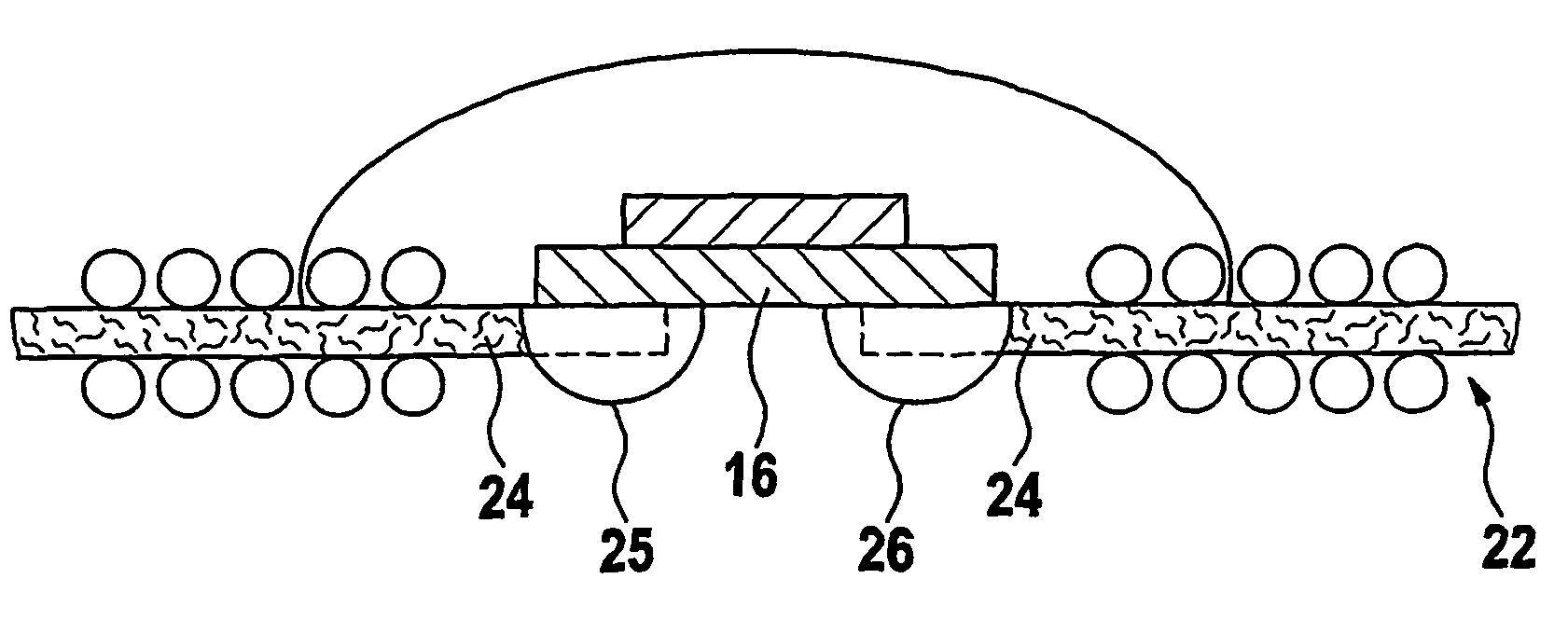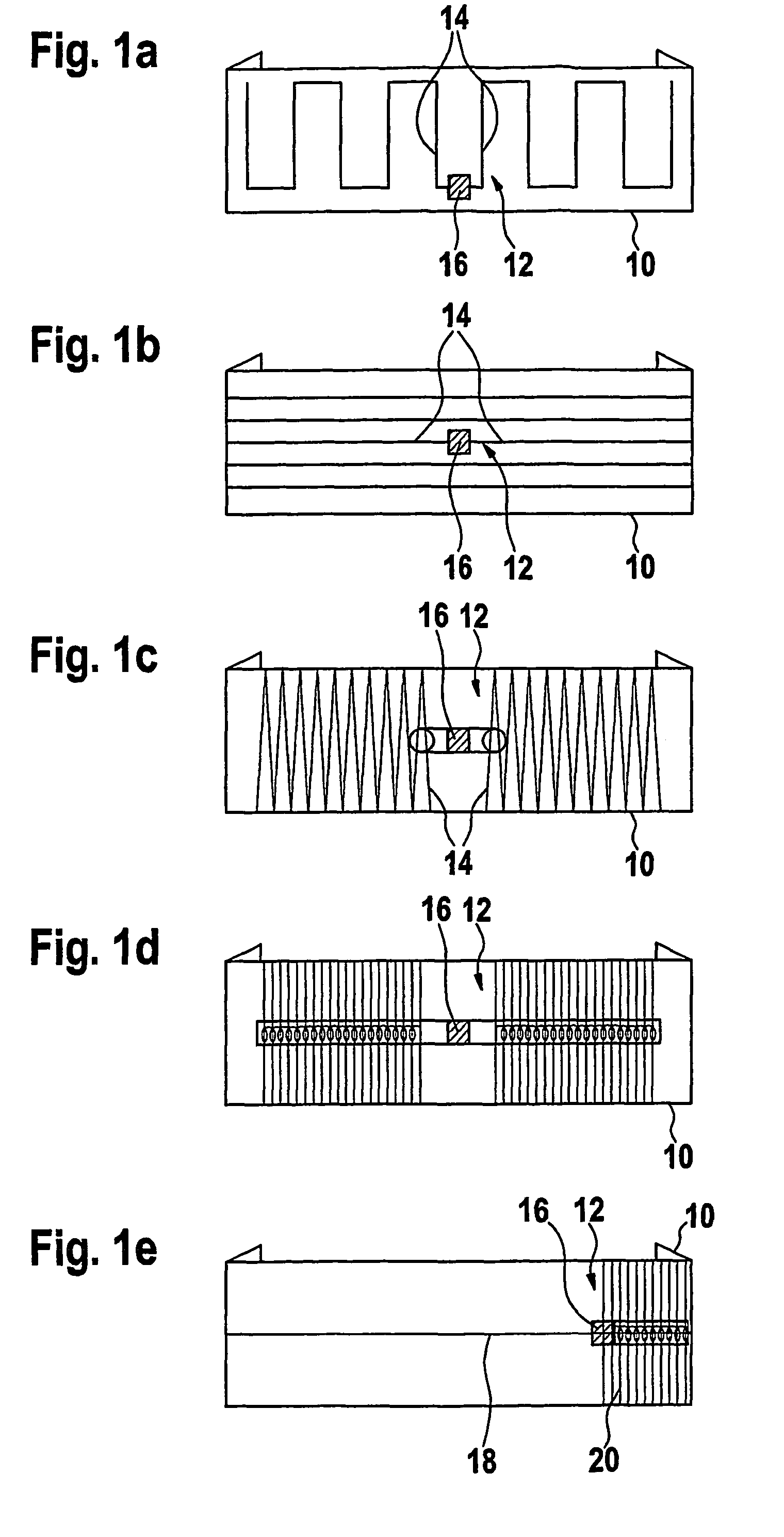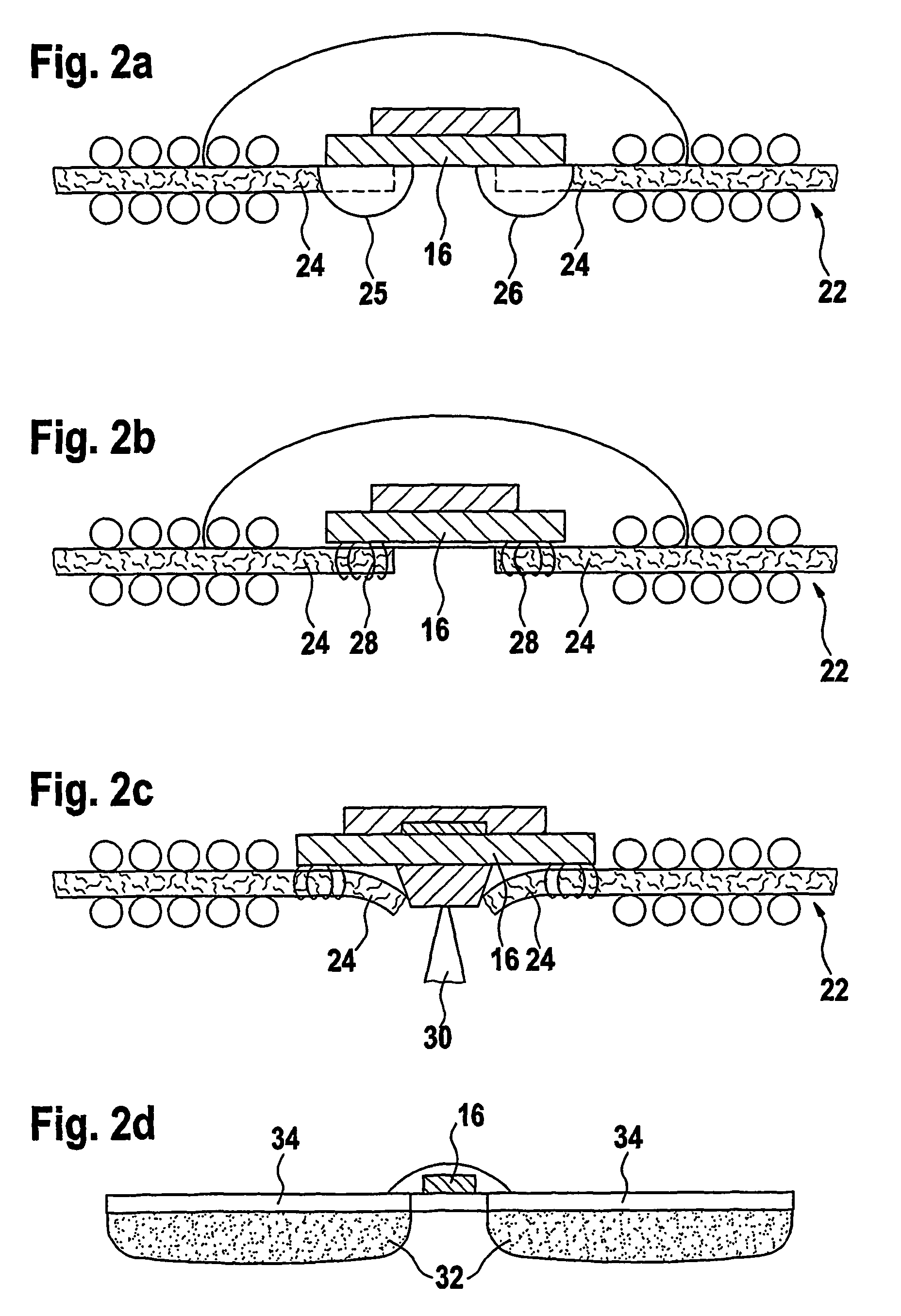Textile material comprising an HF transponder
a technology of transponder and textile, which is applied in the direction of weaving, washing apparatus, and using reradiation, etc., can solve the problems of inability to fully integrate an air coil in a textile layer, inability to meet the intended use, and inability to achieve the effect of reducing the danger of fractures at the antenna connection of the circuit modul
- Summary
- Abstract
- Description
- Claims
- Application Information
AI Technical Summary
Benefits of technology
Problems solved by technology
Method used
Image
Examples
Embodiment Construction
[0047]FIG. 1a is a top view of a textile label 10 with a transponder 12 that comprises a dipole antenna 14 as well as a circuit module 16 connected to the dipole 14 that has been opened up in the middle. The geometric length of the dipole 14 is shortened by half the wavelength of the working frequency of the transponder 12 and is electrically extended by inductive and capacitive contents. This has been implemented by a meandering structure of the electrical conductor of the dipole antenna 14. In the case of embroidery techniques, weaving techniques or printing techniques this can be achieved by a continuous electrically conductive thread or by a continuous conductive printed track. In the case of weaving techniques this is also possible by combining electrically conductive warp threads with weft threads, wherein said threads are interconnected at points of intersection, whereas for the remainder they are electrically insulated from the other regions.
[0048]In FIG. 1b the dipole 14 is...
PUM
| Property | Measurement | Unit |
|---|---|---|
| frequency | aaaaa | aaaaa |
| frequency | aaaaa | aaaaa |
| frequency | aaaaa | aaaaa |
Abstract
Description
Claims
Application Information
 Login to View More
Login to View More - R&D
- Intellectual Property
- Life Sciences
- Materials
- Tech Scout
- Unparalleled Data Quality
- Higher Quality Content
- 60% Fewer Hallucinations
Browse by: Latest US Patents, China's latest patents, Technical Efficacy Thesaurus, Application Domain, Technology Topic, Popular Technical Reports.
© 2025 PatSnap. All rights reserved.Legal|Privacy policy|Modern Slavery Act Transparency Statement|Sitemap|About US| Contact US: help@patsnap.com



